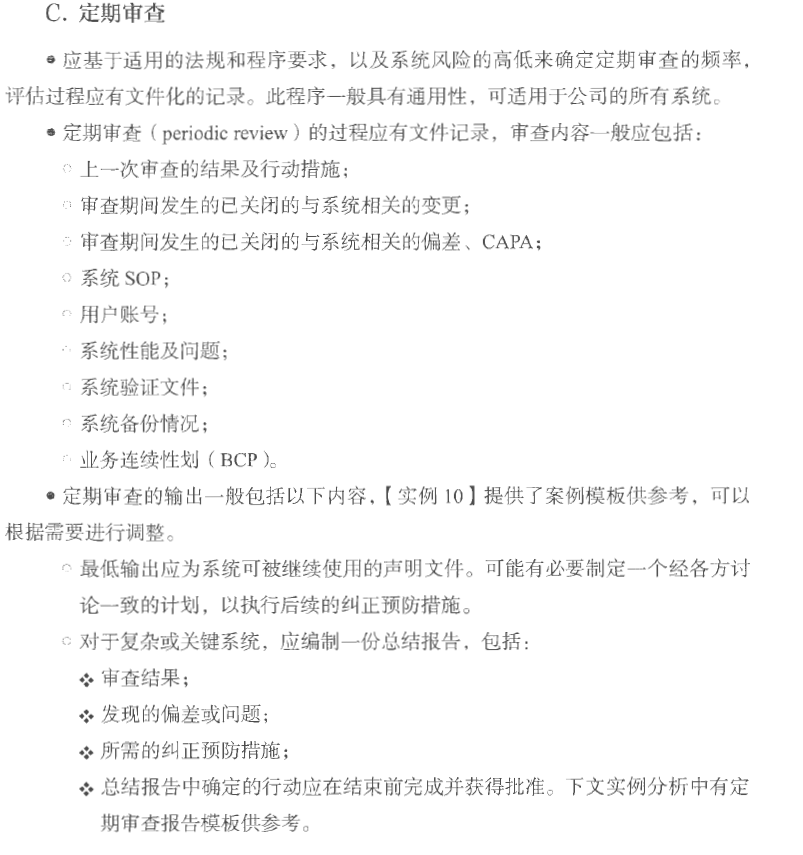结论:需要保持计算机化系统的确认状态,再确认/周期性确认的周期基于法规要求、对患者安全、产品质量、数据完整性的影响、系统复杂度等来定。同时这个再确认的周期也可以基于历史数据或当前系统状态进行调整。
依据如下:
2010版GMP 附录10 计算机化系统
第六条 计算机化系统验证包括应用程序的验证和基础架构的确认,其范围与程度应当基于科学的风险评估。风险评估应当充分考虑计算机化系统的使用范围和用途。
应当在计算机化系统生命周期中保持其验证状态。
2023版GMP指南 厂房设施与设备 6.3.5.1 C 定期审查
应基于适用的法规和程序要求,以及系统风险的高低来确定定期审查的频率,评估过程应有文件化的记录。此程序一般具有通用性,可适用于公司的所有系统。
ISPE GAMP5第二版 附录O8
Periodic review frequency should be based on a documented risk assessment that considers the impact on patient safety, product quality, and data integrity. The risk assessment should also consider system complexity.
The frequency of periodic reviews may be adjusted based on current and historical information, for example:
• Increasing the frequency of periodic reviews when significant incidents occur that suggest operational controls are not effective
• Decreasing the frequency of periodic reviews based on system maturity, e.g., systems that are not subject to significant change or incidents
需要定期回顾
EU GMP Annex 11
11. Periodic evaluation
Computerised systems should be periodically evaluated to confirm that they remain in a valid state and are compliant with GMP. Such evaluations should include, where appropriate, the current range of functionality, deviation records, incidents, problems, upgrade history, performance, reliability, security and validation status reports.
这{{threadTextType}}正{{isAdminText}}
为帮助审核人员更快处理,请填写举报原因:
为帮助审核人员更快处理,请填写举报原因:

